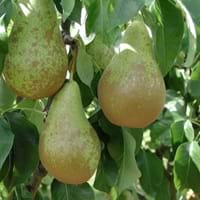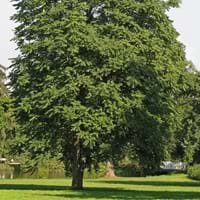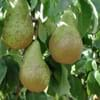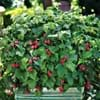Life Span
Perennial
Perennial
Origin
Europe, Western Asia
China
Types
Not Available
Not Available
Number of Varieties
Not Available
Habitat
Dappled Shade, Sunny Edge, Woodland Garden Secondary
Fields, Forest edges, Grassland, Roadsides
USDA Hardiness Zone
5-9
4-8
Sunset Zone
2a, 2b, 3a, 3b, 4, 5, 6, 7, 8, 9, 14, 15, 16, 17, 18
Not Available
Habit
Oval or Rounded
Arching/Fountain-shaped
Flower Color
White
Yellow green, Light Green
Flower Color Modifier
Bicolor
Bicolor
Fruit Color
Yellow, Red, Yellow green
Pink, Light Green, Sienna
Leaf Color in Spring
Dark Green
Green
Leaf Color in Summer
Dark Green
Dark Green
Leaf Color in Fall
Purple, Dark Green, Burgundy
Dark Green
Leaf Color in Winter
Light Green
Not Available
Leaf Shape
Elliptic
Heart-shaped
Plant Season
Spring, Summer, Fall
Spring, Summer
Sunlight
Full Sun
Full Sun, Partial Sun, Partial shade
Type of Soil
Clay, Loam, Sand
Clay, Loam, Sand
The pH of Soil
Neutral
Acidic, Neutral, Alkaline
Soil Drainage
Well drained
Average
Bloom Time
Spring
Spring, Late Spring, Early Summer, Summer
Tolerances
Drought
Pollution, Drought, Salt, Soil Compaction
Where to Plant?
Container, Ground
Ground
How to Plant?
Seedlings
Seedlings
Plant Maintenance
Medium
Medium
Watering Requirements
Average Water Needs
Average Water Needs, Do Not over Water
In Summer
Lots of watering
Drought Tolerant, Average Water
In Spring
Moderate
Drought Tolerant, Average Water
In Winter
Average Water
Drought Tolerant, Average Water
Soil pH
Neutral
Acidic, Neutral, Alkaline
Soil Type
Clay, Loam, Sand
Clay, Loam, Sand
Soil Drainage Capacity
Well drained
Average
Sun Exposure
Full Sun
Full Sun, Partial Sun, Partial shade
Pruning
Remove damaged leaves, Remove dead branches, Remove dead leaves
Prune in late summer or fall, Prune in late winter, Remove damaged leaves, Remove dead branches, Remove dead leaves
Fertilizers
All-Purpose Liquid Fertilizer
All-Purpose Liquid Fertilizer
Pests and Diseases
Bacterial Diseases, Black rot, Fungal Diseases
Red blotch, Spotted Lanterfly
Plant Tolerance
Drought
Drought, Variety of soil types
Flowers
Showy
Insignificant
Flower Petal Number
Single
Single
Fragrant Bark/Stem
No
Yes
Foliage Texture
Medium
Coarse
Foliage Sheen
Glossy
Matte
Attracts
Birds, Butterflies
Birds
Allergy
Mouth itching, Throat itching
allergic reaction, Skin irritation
Aesthetic Uses
Showy Purposes
Beautification, Showy Purposes
Beauty Benefits
Not Available
No Beauty Benefits
Environmental Uses
Air purification
Air purification
Medicinal Uses
Astringent, Febrifuge, Sedative
Anthelmintic, Antispasmodic, Asthma, Astringent
Part of Plant Used
Fruits
Bark, Root
Other Uses
Used As Food
Used as Ornamental plant, Used for its medicinal properties, Used for woodware
Used As Indoor Plant
No
No
Used As Outdoor Plant
Yes
Yes
Garden Design
Edible, Fruit / Fruit Tree, Topiary / Bonsai / Espalier
Shade Trees, Street Trees
Botanical Name
Pyrus Communis
AILANTHUS altissima
Common Name
Dessert Pear, Forelle Pear, Forellenbirne, Pear
Tree-of-Heaven
In Hindi
Forelle Pear
कल्पवृक्ष
In German
Forelle Pear
Baum des Himmels
In French
Forelle Pear
Arbre de paradis
In Spanish
Forelle Pear
Arbol del Cielo
In Greek
Forelle Pear
Δέντρο του Ουρανού
In Portuguese
Forelle Pear
Árvore do céu
In Polish
Forelle Pear
Drzewo Nieba
In Latin
Forelle Pear
Lignum de caelo
Phylum
Magnoliophyta
Magnoliophyta
Class
Magnoliopsida
Magnoliopsida
Family
Rosaceae
Simaroubaceae
Clade
Angiosperms, Eudicots, Rosids
Angiosperms, Eudicots, Rosids
Tribe
Not Available
Not Available
Subfamily
Not Available
Not Available
Number of Species
Not Available
Importance of Forelle Pear and Tree-of-Heaven
Want to have the most appropriate plant for your garden? You might want to know the importance of Forelle Pear and Tree-of-Heaven. Basically, these two plants vary in many aspects. Compare Forelle Pear and Tree-of-Heaven as they differ in many characteristics such as their life, care, benefits, facts, etc. Every gardener must at least have the slightest clue about the plants he wants to plant in his garden. Compare their benefits, which differ in many ways like facts and uses. The medicinal use of Forelle Pear is Astringent, Febrifuge and Sedative whereas of Tree-of-Heaven is Anthelmintic, Antispasmodic, Asthma and Astringent. Forelle Pear has beauty benefits as follows: Not Available while Tree-of-Heaven has beauty benefits as follows: Not Available.
Compare Facts of Forelle Pear vs Tree-of-Heaven
How to choose the best garden plant for your garden depending upon its facts? Here garden plant comparison will help you to solve this query. Compare the facts of Forelle Pear vs Tree-of-Heaven and know which one to choose. As garden plants have benefits and other uses, allergy is also a major drawback of plants for some people. Allergic reactions of Forelle Pear are Mouth itching and Throat itching whereas of Tree-of-Heaven have allergic reaction and Skin irritation respectively. Having a fruit bearing plant in your garden can be a plus point of your garden. Forelle Pear has showy fruits and Tree-of-Heaven has showy fruits. Also Forelle Pear is not flowering and Tree-of-Heaven is not flowering . You can compare Forelle Pear and Tree-of-Heaven facts and facts of other plants too.





